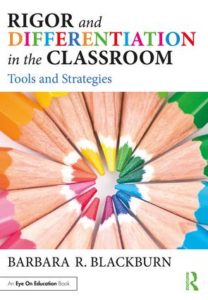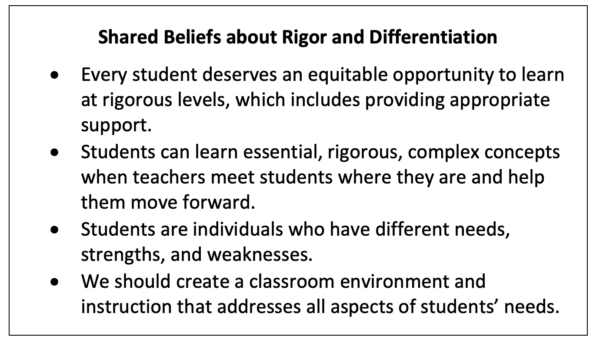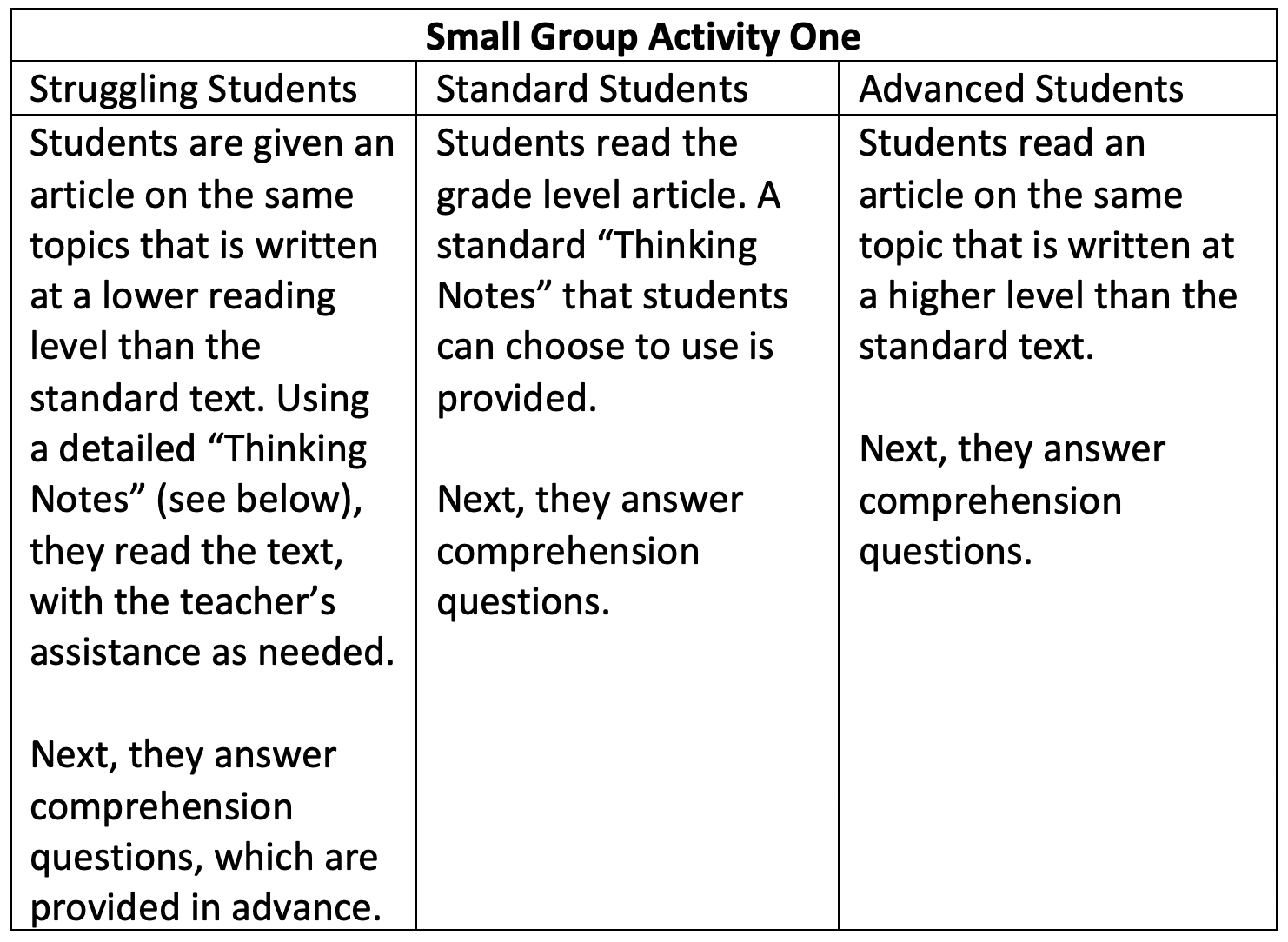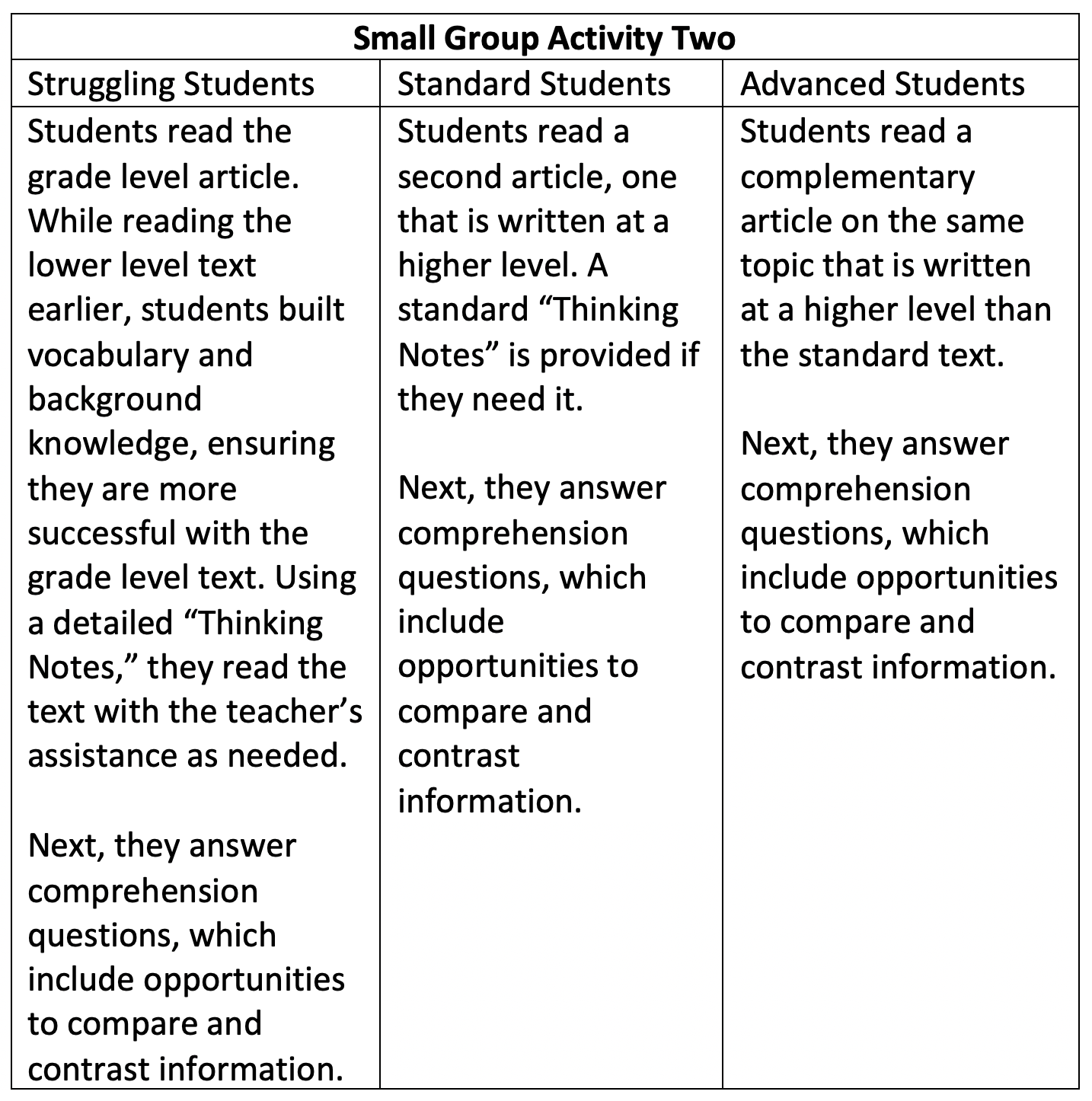How to Keep the Rigor in Differentiated Lessons
By Barbara R. Blackburn

Differentiation, which is commonly viewed as a model for meeting students’ needs, is more accurately described as a set of beliefs about teaching and learning that are reflected as a set of practices.
Rigor is creating an environment in which each student is expected to learn at high levels, each student is supported so he or she can learn at high levels, and each student demonstrates learning at high levels (Blackburn, 2008).
Differentiation and rigor are both key facets of effective instruction. However, too often we think they are separate initiatives. In reality, they are very similar.
Rigor and Differentiation in Practice
Let’s look at a sample content literacy lesson. In the standard lesson the teacher assigns a grade level article for all students to read, followed with application activities. However, some of the students are unable to read the rigorous article.
What to do? Rather than simply reading the article aloud to them or hoping they learn the material on their own, there is a way to differentiate for three groups: those on grade level, those below grade level, and those above grade level.
Notice that all students are reading an article on the same topic, just at different levels. Each group also answers comprehension questions that are customized to the articles but are all rigorous.
Next, we have each group read a different article on the topic. The key here is that struggling students now read the original grade level article. Because they read the simpler article first, they’ve built background knowledge and vocabulary skills and will be more successful with the more rigorous article.
Now that the reading portion is over, all students are prepared to complete a rigorous assignment. The teacher can organize students into multi-level groups, with specified roles to complete the task.
Example: Students choose an issue, either one identified in class or another one based on their research (a minimum of three appropriate sources). In their groups, students create a research question, describe an appropriate investigation approach, and justify why their investigation needs to occur and how it will impact society.
Recapping What We’ve Done
Let’s revisit rigor and differentiation in light of the lesson. First, we have customized the preparation for the task based on the readiness level of each student. Although we have provided adjusted instruction, we did not simply “dumb down” the instruction for struggling students. The easier assignment prepared students for the same level of rigor as other students. Also, advanced students were not “punished” by doing extra work – they stayed on topic.
Next, we have moved students into multi-level groups to work on the final task, which is at a high level of rigor. To ensure that each student contributes to the group, it’s important to assign well-defined roles and tasks to members of the group. In this case, differentiation is used to allow each student to work at rigorous levels, which is at the heart of rigor: providing support for each student.
A Final Note
Differentiation and rigor are intertwined strategies that can help all students learn at high levels. Combining the two is not more work – it is more effective.
Reference: about “Thinking Notes”
Teaching Tolerance (now Learning for Justice) provides this explanation of the Thinking Notes strategy.






































